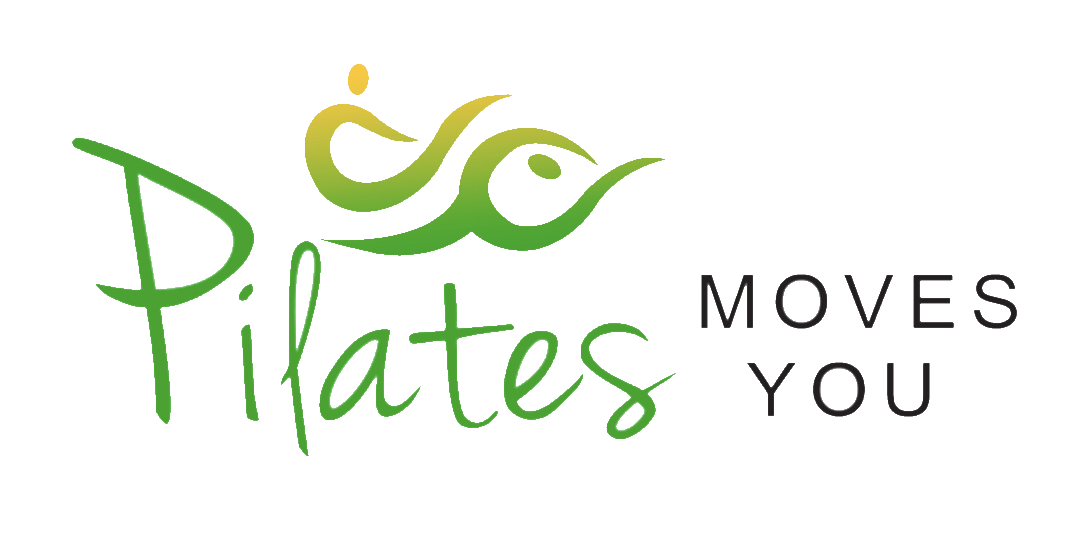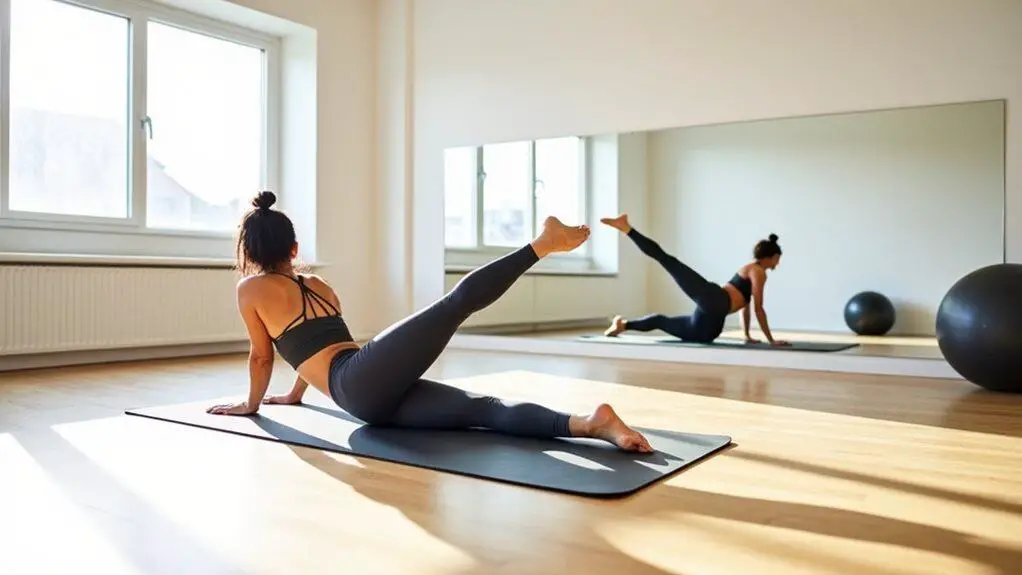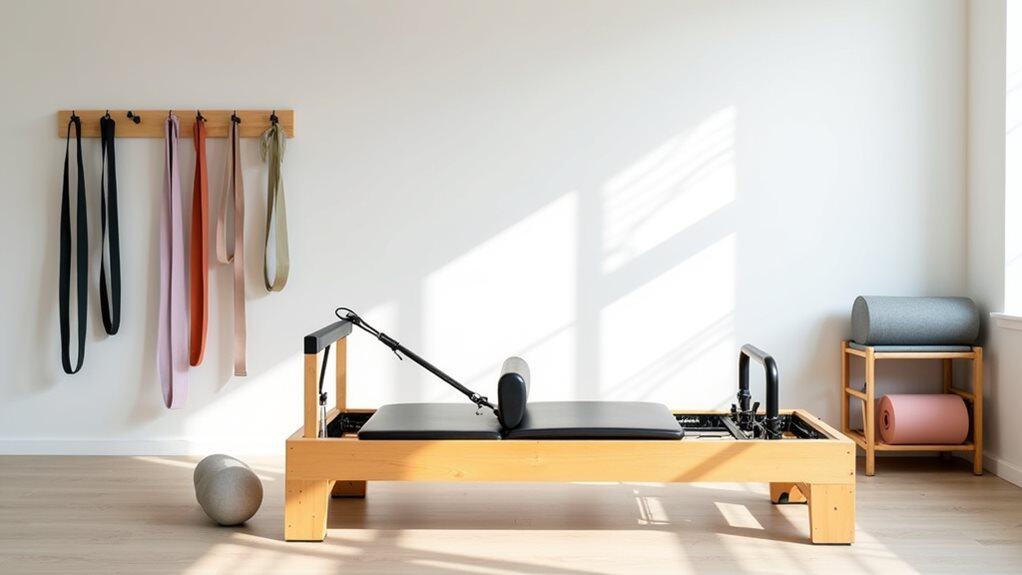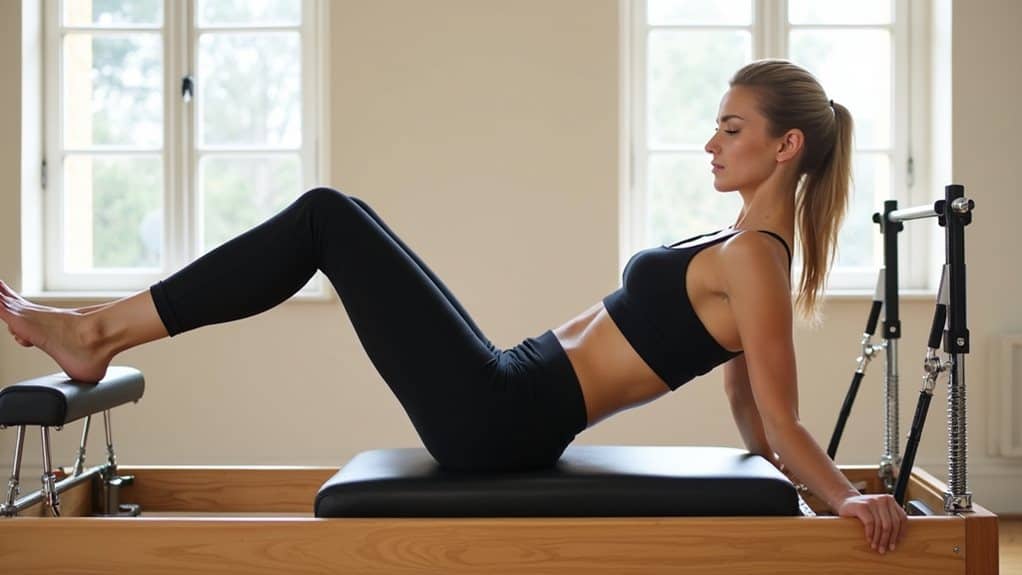As athletes, we all know the importance of maintaining good posture, flexibility, and strength in order to perform at our best. But did you know that Pilates can help you achieve all of these things and more?
Pilates is a form of exercise that focuses on postural alignment, core strength, and flexibility – all of which are key to athletic performance.
What is Pilates and How Does it Work?
Pilates is a form of exercise that was developed by Joseph Pilates in the early 20th century. It involves a series of controlled movements and exercises that are designed to improve core strength, flexibility, and posture. The focus of Pilates is on the development of deep stabilizing muscles that support the spine and improve overall body alignment.
The Pilates method is based on the principles of concentration, control, precision, centering, breath, and flow. These principles are incorporated into every exercise, helping to create a mind-body connection and improve overall body awareness.
Core Strength
One of the main benefits of Pilates is the development of core strength. The core muscles are the deep muscles of the abdomen and back that help to support the spine and improve overall posture. Pilates focuses on the development of these deep stabilizing muscles, helping to create a strong and stable core.
Pilates exercises are designed to target the core muscles, strengthening them from the inside out. By developing core strength, athletes can improve their overall athletic performance, as well as reduce the risk of injury.
Flexibility
Pilates is also known for its ability to improve flexibility. The exercises are designed to stretch and lengthen the muscles, improving range of motion and overall flexibility. This is particularly beneficial for athletes, who need to be able to move their bodies through a wide range of motion.
Pilates also helps to improve joint mobility, reducing the risk of injury and enhancing overall athletic performance.
Posture
Good posture is essential for athletes, as it improves overall body alignment and reduces the risk of injury. Pilates focuses on improving posture by strengthening the muscles of the back, shoulders, and core.
Through regular Pilates practice, athletes can improve their posture and reduce the risk of back pain and other common injuries.
“Pilates develops the body uniformly, corrects incorrect postures, restores physical vitality, invigorates the mind, and elevates the spirit.”
Joseph Pilates
Overall, Pilates is an effective form of exercise for athletes who are looking to improve their core strength, flexibility, posture, and overall athletic performance.
Pilates for Postural Alignment
Pilates is a form of exercise that focuses on postural alignment, especially of the spine, muscles, and joints. Good posture is essential for athletes as it can improve their athletic performance and prevent injuries. Pilates helps to correct common postural imbalances that can affect athletic performance.
The main principles behind Pilates’ postural alignment focus are concentration, control, centre, flow, precision and breathing. These principles are utilised to strengthen the core muscles, which are essential to support the spine and ensure good posture. Moreover, the stretching exercises help to improve the flexibility and mobility of the spine, promoting a healthy posture.
Through Pilates, athletes can develop the necessary muscle strength and flexibility to achieve and maintain proper alignment of the body during their activities. Pilates exercises are designed to address common postural issues such as forward head posture, rounded shoulders, and anterior pelvic tilt. With regular Pilates practice, athletes can experience improved postural alignment, which can lead to enhanced athletic performance.
Pilates can be especially beneficial for athletes who are involved in activities that require prolonged periods of sitting or standing, as it helps to reduce the strain placed on the spine and other joints. By practicing Pilates, athletes can maintain a healthy posture, both on and off the field, which may help to prevent injuries and promote overall physical wellbeing.
Pilates for Athletic Performance
Pilates is an excellent way for athletes to improve their overall athletic performance. By developing core strength, agility, and endurance, athletes can take their training to the next level. Pilates also helps athletes prevent injuries and recover faster from them.
One of the benefits of Pilates is that it targets the deep stabilizing muscles of the body, which are often neglected in traditional strength training. By strengthening these muscles, athletes can improve their overall power and explosiveness. Pilates also helps to improve flexibility, which is important for all athletes, regardless of their sport.
Pilates and Strength Training
While Pilates is a form of exercise in its own right, it can also be used to complement traditional strength training. By incorporating Pilates into their training routine, athletes can improve their overall strength and endurance, as well as their flexibility and range of motion. Pilates can also help athletes prevent injuries caused by overuse and improper technique.
Pilates and Endurance Training
Pilates is a great way to improve endurance, which is vital for athletes who participate in sports that require sustained effort over a long period of time. By developing strong, stable muscles, athletes can maintain their form and technique for longer periods of time, allowing them to perform at their best throughout a game or competition.
Pilates and Agility Training
Agility is another key component of athletic performance, and Pilates can help athletes improve their agility in several ways. By improving their overall balance and coordination, athletes can move more quickly and efficiently on the field or court. Pilates also helps athletes develop a greater awareness of their body, which can be invaluable in sports that require split-second decision making.
Overall, Pilates is an excellent way for athletes to improve their athletic performance and prevent injuries. By incorporating Pilates into their training routine, athletes can take their game to the next level and achieve their full potential.
Pilates for Flexibility
Athletes need to maintain flexibility and a full range of motion in their joints to perform at their best. Pilates can help to improve flexibility and prevent injuries by stretching and strengthening the muscles that support the joints. In Pilates, each exercise focuses on proper alignment and movement patterns, ensuring that the joints are moving through their full range of motion. This helps to reduce the risk of injuries caused by overuse or imbalances.
Pilates exercises also target the muscles that are commonly tight in athletes, such as hip flexors and hamstrings. Tight muscles can restrict movement and lead to imbalances, which in turn can contribute to injuries. By stretching and lengthening these muscles, Pilates can improve overall flexibility and range of motion.
In addition to the physical benefits, Pilates can also help to increase body awareness and mindfulness. By focusing on the breath and movements, athletes can learn to tune into their bodies and identify areas of tension or weakness. This can help them to address these issues before they become more serious.
Stretching in Pilates
Pilates exercises incorporate stretching throughout the workout, with a focus on dynamic stretching as opposed to static stretching. Dynamic stretching involves moving the joints through their full range of motion, while static stretching involves holding a stretch for a prolonged period of time. Dynamic stretching can be more effective in improving flexibility and reducing the risk of injury.
For example, the Pilates exercise “Roll Up” involves rolling up through the spine and then reaching towards the toes, which stretches the hamstrings and improves spinal mobility. Another exercise, “Swan,” involves arching the back and lifting the chest, which stretches the chest and shoulders.
Joint Mobility in Pilates
Pilates exercises are designed to improve joint mobility by moving the joints through their full range of motion. This helps to lubricate the joints and keep them healthy. For example, the exercise “Spine Stretch Forward” involves rounding the spine and reaching forward, which mobilizes the vertebrae and improves spinal flexibility.
Another exercise, “Mermaid,” involves sitting on one hip and reaching up and over with the opposite arm, which mobilizes the shoulder joint and improves thoracic mobility.
Overall, Pilates can be a valuable tool for athletes looking to improve their flexibility and range of motion. By incorporating Pilates into their training regimen, athletes can reduce their risk of injury and perform at their best.
Pilates for Injury Prevention and Rehabilitation
Aside from improving postural alignment, flexibility, and athletic performance, Pilates is also known for its benefits in injury prevention and rehabilitation. Athletes are prone to injuries due to the demands of their sports, and Pilates can help in preventing these injuries and promoting efficient recovery.
Through Pilates, athletes can develop stronger and more stable muscles, thereby reducing the risk of injuries. Pilates also helps in improving balance and coordination, which are essential in preventing falls and other accidents that can lead to injuries.
In cases where injuries do occur, Pilates can also aid in the rehabilitation process. With the help of a qualified instructor, Pilates can be modified and tailored to cater to specific injuries, focusing on targeted areas that need rehabilitation. Pilates can also help in restoring range of motion and flexibility, aiding in the athlete’s overall recovery process.
Aside from physical benefits, Pilates also helps in promoting mental wellness, which is crucial in injury prevention and rehabilitation. Pilates incorporates breathing and mindfulness techniques that help in reducing stress and anxiety, which can impede the athlete’s recovery process. By integrating Pilates into their rehabilitation regimen, athletes can improve their overall physical and mental wellbeing, making them stronger and more resilient for future challenges.
Pilates for Mental Focus and Relaxation
Aside from the physical benefits, Pilates also offers a range of mental health benefits for athletes. The practice incorporates mindfulness and breathing techniques that can help improve focus, reduce stress and promote relaxation.
The controlled movements and focus required in Pilates can help athletes learn to control their thoughts and emotions better, which can prove useful in high-pressure situations such as competition or performance. Improved mental focus also means athletes can fine-tune their technique and movements, leading to better overall performance.
The breathing techniques used in Pilates can also help to increase oxygen flow and reduce tension in the body, leading to increased relaxation and a greater sense of calm. It can be an excellent way to reduce stress levels that may be caused by the demands of sports training and competition.
Overall, incorporating Pilates into your athletic training regimen can have significant benefits for both your physical and mental health. The focus on breath control and mindfulness can help athletes to centre themselves, build mental resilience and perform at their best.
How to Incorporate Pilates into Athletic Training
One of the biggest benefits of Pilates for athletes is its versatility. Pilates can be incorporated into almost any athletic training programme to help improve performance, prevent injuries, and aid in rehabilitation. Here are some practical tips on how to incorporate Pilates into your athletic training:
1. Integration Strategies
Athletes can incorporate Pilates into their training by either adding it as a separate workout or integrating it into their existing training programme. The latter involves incorporating Pilates exercises into warm-ups, cool-downs, and recovery days to help improve flexibility, core strength, and overall athletic performance.
2. Frequency and Duration of Pilates Sessions
The frequency and duration of Pilates sessions can vary depending on an athlete’s individual goals and schedule, but consistency is key. Experts recommend doing Pilates at least two to three times a week for optimal results. Each session can last anywhere from 30 minutes to an hour, depending on the athlete’s fitness level and Pilates experience.
3. Proper Instruction
It is important to receive proper instruction from a certified Pilates instructor to ensure proper form and technique. This is particularly important for athletes who are new to Pilates or those who have existing injuries. A qualified instructor can help athletes modify exercises to suit their unique needs and fitness level.
4. Use of Equipment
Pilates equipment such as reformers, cadillacs, and barrels can be used to enhance the Pilates experience. While they are not necessary, they can help athletes deepen their stretches, challenge their strength and stability, and increase the overall effectiveness of their Pilates workout.
By following these practical tips, athletes can effectively incorporate Pilates into their athletic training regime. Regular Pilates practice can help athletes improve their overall athletic performance, prevent injuries, and aid in rehabilitation.
Pilates and Sports-Specific Training
Pilates can be adapted to cater to different sports and can be an excellent addition to sports-specific training. The benefits of Pilates for athletes in individual and team sports are tremendous. Here are some examples of how Pilates can enhance performance in different sports:
| Sport | Pilates Benefit |
|---|---|
| Football | Pilates can improve core strength, balance, and agility which are essential for football players |
| Golf | Pilates can help golfers improve their swing and increase their flexibility and stability on the course |
| Swimming | Pilates can improve breathing and body awareness, leading to better stroke technique and increased speed |
| Running | Pilates can strengthen the muscles used in running, improve flexibility, and reduce the risk of injury |
Integration of Pilates into sports-specific training should be done with the guidance of a qualified Pilates instructor. The instructor can tailor Pilates exercises to meet the athlete’s specific needs and to enhance their performance in their chosen sport.
FAQ: Common Pilates Questions for Athletes
If you’re an athlete considering incorporating Pilates into your training routine, you may have some questions. Here are some of the most common Pilates-related questions that athletes ask:
How often should I do Pilates?
It is recommended to do Pilates at least 2-3 times per week to see the full benefits. However, the frequency of Pilates sessions may vary depending on personal goals and fitness levels.
Can Pilates replace traditional strength training?
Pilates is not meant to replace traditional strength training. Rather, it complements it by improving core strength, balance, flexibility, and posture. Incorporating Pilates into an overall fitness training programme can enhance athletic performance and reduce the risk of injuries.
Is Pilates suitable for athletes of all levels?
Yes, Pilates can be adapted to suit athletes of all levels, from beginners to elite athletes. A qualified Pilates instructor can modify exercises to cater to individual fitness levels and goals.
What are the benefits of Pilates for athletes?
Pilates can help to improve core strength, flexibility, balance, postural alignment, and mental focus. It can also help to prevent injuries, aid in rehabilitation, and enhance sports-specific training. Combining Pilates with other forms of training can maximise athletic potential.
Do I need any special equipment for Pilates?
While Pilates equipment such as reformers and cadillacs can enhance the workout, they are not necessary. Many Pilates exercises can be done with just a mat and minimal props. A qualified Pilates instructor can advise on the use of equipment and props.
Is Pilates a good form of exercise to improve posture?
Yes, Pilates can help to improve postural alignment by strengthening core muscles and correcting common postural imbalances. Proper alignment of the spine, muscles, and joints can enhance athletic performance and reduce the risk of injuries.
Can Pilates help with injury rehabilitation?
Yes, Pilates can aid in injury rehabilitation by improving flexibility, joint mobility, and overall strength. It can also help to prevent future injuries by addressing underlying imbalances or weaknesses that may have contributed to the injury.
If you have any other questions regarding Pilates and its benefits for athletes, consult a qualified Pilates instructor or fitness professional.




